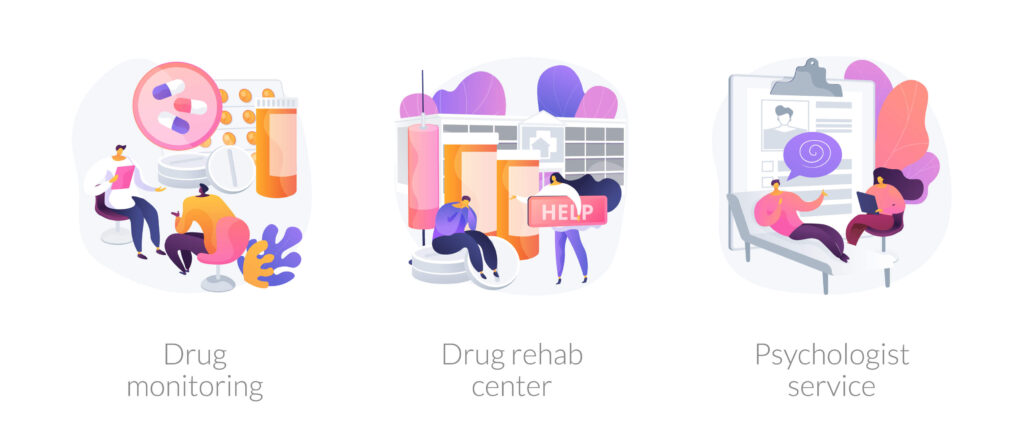MDA Drug: Understanding Its Effects and Risks

MDA, also known as 3,4-methylenedioxyamphetamine, is a psychoactive substance that has gained attention for its effects and risks. We aim to delve into what MDA is, its effects on users, and how it compares to its more famous counterpart, MDMA. Understanding these aspects is crucial for recognizing the potential dangers associated with its use.
At WhiteSands Treatment, the approach to treating MDA abuse focuses on holistic recovery, addressing both the physical and psychological aspects of addiction. This includes medically supervised detox, individual and group therapy, and comprehensive aftercare planning to support long-term recovery.
Introduction to MDA: What is This Drug?
MDA is a synthetic psychoactive substance that falls under the category of phenethylamines. Similar in structure to MDMA (commonly known as ecstasy or molly), MDA is known for its stimulant and hallucinogenic properties. It’s often used recreationally for the intense feelings of euphoria and altered sensory perceptions it induces.
WhiteSands Treatment offers comprehensive care for individuals dealing with MDA abuse. Their approach includes medically assisted detox, therapy, and personalized treatment plans that address both the physical and emotional aspects of addiction.
The Psychoactive Effects of MDA Drug
MDA is a synthetic substance belonging to the phenethylamine class of drugs. Structurally similar to MDMA (ecstasy or molly), it is known for its stimulant and hallucinogenic properties. MDA is frequently used recreationally for the distinct and profound experiences it offers.
MDA’s psychoactive effects can vary from person to person, but commonly include:
Enhanced Sensory Perception: Users often report intensified sensory experiences, with heightened colors, sounds, and tactile sensations. These sensory enhancements can make music, lights, and even physical touch feel more vibrant and meaningful.
Emotional Depth: MDA is renowned for its ability to induce deep emotional states, leading to heightened empathy, emotional warmth, and a strong desire for social connection. Users often describe feeling more open and emotionally expressive.
Stimulant Properties: Similar to other amphetamines, MDA has stimulant effects that lead to increased energy, alertness, and a sense of being “alive.”
View this post on Instagram
Risks and Side Effects of MDA Use
MDA is a synthetic drug classified as a phenethylamine, closely related to MDMA (ecstasy or molly). It is known for its stimulating and hallucinogenic effects, making it a sought-after substance in recreational settings.

- Dehydration: MDA can cause increased sweating and a higher body temperature, leading to dehydration. Users may not be aware of the need to hydrate adequately, increasing the risk.
- Hyperthermia: Overheating can occur due to MDA’s stimulant properties. This can result in potentially life-threatening situations, especially in crowded, high-energy environments like parties or festivals.
- Cardiovascular Issues: MDA can strain the cardiovascular system, potentially leading to heart palpitations, high blood pressure, and increased heart rate. Individuals with pre-existing heart conditions are at greater risk.
- Anxiety and Paranoia: Some users experience heightened anxiety or paranoia while under the influence of MDA.
- Depression: The comedown from MDA can result in feelings of depression, sometimes lasting for days after use.
- Confusion: MDA’s hallucinogenic effects can lead to confusion and disorientation.
- Psychological Dependence: Regular use of MDA can lead to psychological dependence, where individuals may feel compelled to use the drug to cope with everyday life.
- Impaired Memory and Cognitive Function: Long-term use may impair memory and cognitive function, affecting daily life.
MDA vs. MDMA: Understanding the Differences
While MDA and MDMA share common characteristics, they differ in several key ways: MDA and MDMA have slightly different chemical structures, resulting in variations in their effects on the brain and body. MDA is often associated with more intense and profound emotional experiences. Users may report a deeper sense of empathy, emotional warmth, and introspection. MDMA tends to produce feelings of euphoria, increased sociability, and emotional openness. While it can also induce empathy, it may do so in a more lighthearted and extroverted manner.
MDA’s effects tend to last longer and can be more intense compared to MDMA. This prolonged duration can lead to increased risks if not used responsibly.MDA is known for its stronger hallucinogenic effects, often resulting in visual and auditory hallucinations. While MDMA can also induce hallucinations, they are generally less pronounced compared to MDA.
Recognizing Signs of MDA Abuse
Recognizing signs of MDA abuse can help individuals, friends, and family members take appropriate action. Some common signs include:
- Unexplained Mood Swings: Frequent shifts in mood, from extreme highs to lows, may indicate substance abuse.
- Increased Secretiveness: Individuals abusing MDA may become secretive about their activities and social circles.
- Dilated Pupils: Enlarged pupils, even in well-lit environments, can be a sign of MDA use.
- Hyperactivity: MDA is a stimulant, so increased energy and restlessness can be observed.
- Academic or Occupational Decline: A decline in academic or occupational performance may occur as individuals prioritize substance use over responsibilities.
- Withdrawal from Social Activities: Individuals abusing MDA may withdraw from previously enjoyed social activities and hobbies.
- Conflict in Relationships: Substance abuse can lead to conflicts with friends and family members.
- Signs of Dehydration: Frequent thirst, dry mouth, and dark urine can be indicators of dehydration, which is common with MDA use.
- Overheating: Overheating, which can result from MDA’s stimulant effects, may manifest as profuse sweating and flushed skin.
The Impact of MDA Drug on Mental and Physical Health
MDA’s effects on mental health can be complex and multifaceted:
Enhanced Emotions: MDA use can lead to heightened emotional states, including increased empathy and emotional warmth. While these experiences can be positive, they may also be accompanied by intense mood swings.
Anxiety and Paranoia: Some individuals may experience anxiety or paranoia while under the influence of MDA. This can lead to feelings of unease and discomfort.
Depression: The comedown from MDA can result in feelings of depression, sometimes lasting for days after use. This can contribute to a cycle of use to avoid negative emotions.
Confusion and Disorientation: MDA’s hallucinogenic effects may lead to confusion and disorientation, impacting cognitive functioning.
WhiteSands Treatment is committed to providing comprehensive care for individuals dealing with substance abuse, including MDA abuse. Their approach includes medically supervised detox, individual and group therapy, and personalized treatment plans addressing both the physical and psychological aspects of addiction.
Legal Status and Concerns Surrounding MDA
The legal status of MDA varies from country to country, and even within regions of the same country. Here are some key points regarding the legal status of MDA:
Schedule Classification: In the United States, MDA is classified as a Schedule I controlled substance. This means it is considered illegal for any purpose, including recreational use, due to its potential for abuse and lack of recognized medical benefits.
International Regulations: MDA is also subject to international regulations. It is listed as a controlled substance under the United Nations Convention on Psychotropic Substances.
Legal Penalties: Possession, distribution, and manufacturing of MDA are subject to legal penalties, including fines and imprisonment, in many jurisdictions.
Treatment Options for MDA Abuse and Addiction
Recognizing the signs of MDA abuse and addiction is the first step towards seeking help. Common signs include changes in behavior, physical symptoms, and neglect of responsibilities. If you or someone you know is experiencing these signs, it’s essential to consider treatment options.
There are several treatment options available for individuals struggling with MDA abuse and addiction:
Medically Supervised Detoxification: The first phase of treatment often involves detoxification. Under the care of medical professionals, individuals can safely rid their bodies of MDA while managing withdrawal symptoms.
Inpatient Rehabilitation: Inpatient rehab programs provide a structured environment where individuals can focus on their recovery. These programs typically include individual and group therapy, counseling, and education on addiction.
Outpatient Treatment: Outpatient programs offer flexibility for individuals who cannot commit to full-time residential care. They provide therapy, counseling, and support while allowing individuals to maintain their daily routines.
Individual and Group Therapy: Therapy is a fundamental component of addiction treatment. It helps individuals address the underlying causes of addiction, develop coping strategies, and build a support network.
Family Therapy: Involving family members in therapy can help repair relationships and provide a strong support system for individuals in recovery.
Dual Diagnosis Treatment: Many individuals with substance abuse issues also have co-occurring mental health disorders. Dual diagnosis programs address both addiction and underlying mental health conditions.
Aftercare and Relapse Prevention: The journey to recovery doesn’t end with treatment. Aftercare programs and relapse prevention strategies are crucial for maintaining sobriety.
How WhiteSands Treatment Approaches MDA Addiction
WhiteSands Treatment understands the importance of holistic well-being. They offer holistic therapies and activities to promote physical, mental, and emotional health. At WhiteSands Treatment, individuals are met with compassion and non-judgmental support. The journey to recovery can be challenging, but with a team of dedicated professionals and a supportive community, individuals can find the strength to overcome addiction. Call WhiteSands Treatment at 877-640-7820
Frequently Asked Questions About MDA Drug
What is MDA?
MDA stands for 3,4-methylenedioxyamphetamine. It is a synthetic psychoactive drug known for its stimulating and hallucinogenic effects. MDA is chemically related to MDMA (3,4-methylenedioxymethamphetamine) and is sometimes referred to as a “sister drug” to MDMA. It is commonly used recreationally for its mind-altering effects.
What does MDA stand for?
MDA stands for 3,4-methylenedioxyamphetamine. This is the full chemical name of the drug.
What is the nickname for MDA?
MDA is often nicknamed “Sally” or “Sass” in street slang. These nicknames are sometimes used colloquially to refer to the drug.
Is MDA naturally occurring?
MDA is not naturally occurring; it is a synthetic drug. It is chemically synthesized in laboratories rather than being found in nature.
What is MDA drug used for?
MDA is primarily used recreationally for its psychoactive effects. It is often used in social or party settings for its stimulating and hallucinogenic properties. However, it is not approved for medical use in most countries and is classified as a controlled substance due to its potential for abuse and harm.
What’s the difference between MDA vs. MDMA?
MDA and MDMA are closely related drugs with some key differences:
- Chemical Structure: MDA and MDMA have similar chemical structures, but MDA has an additional methylenedioxy ring, which can result in different effects.
- Effects: MDA is known for producing more intense emotional experiences, including heightened empathy and emotional warmth. MDMA, on the other hand, is often associated with euphoria and increased sociability.
- Duration: MDA’s effects tend to last longer and can be more intense compared to MDMA.
- Hallucinogenic Properties: MDA is known for its stronger hallucinogenic effects, while MDMA can also induce hallucinations but to a lesser extent.
How long does MDA stay in your system?
The duration MDA stays in your system can vary depending on factors such as individual metabolism, dosage, and frequency of use. In general, MDA can be detected in urine for up to 2-4 days, in blood for up to 24-48 hours, and in hair for several months. However, these are approximate ranges, and detection times may vary. It’s important to note that the effects of MDA are relatively short-lived compared to its detection window.
If you or a loved one needs help with abuse and/or treatment, please call the WhiteSands Treatment at (877) 855-3470. Our addiction specialists can assess your recovery needs and help you get the addiction treatment that provides the best chance for your long-term recovery.

